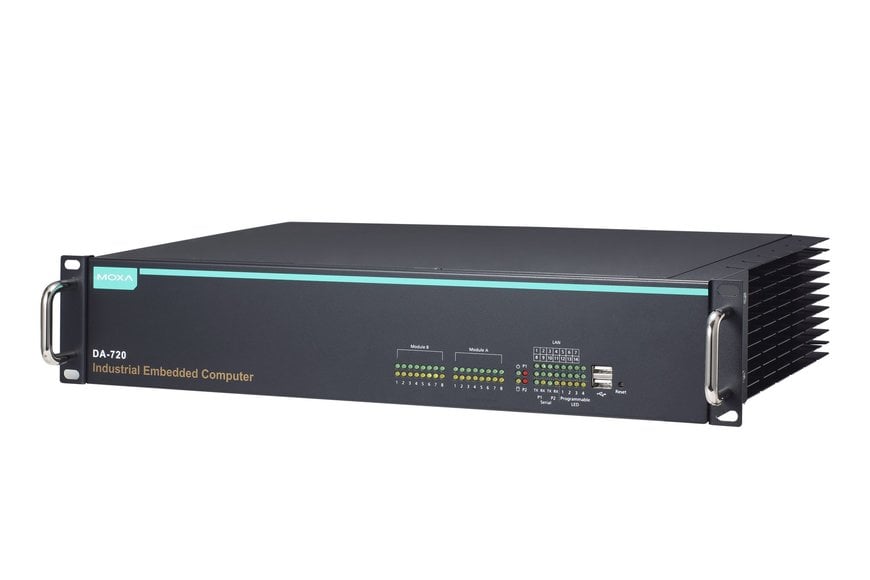www.industryemea.com
09
'17
Written on Modified on
X86-Computer for Energy, Transportation, Marine, Oil and Gas
Embedded World 2017, Booth 1-110 Moxa’s DA-720-DPP series of rackmount computers enables reliable system operation in specialized automation applications, not least due to its compliance with IEC-61850-3-, IEEE 1613-, and IEC 60255.

IEC-61850-3 and IEEE 1613 compliance ensure reliable system operation in energy applications. IEC 60255 compliance regulates the safety of electrical relays in intelligent substations and enables the seamless operation with IEDs as a part of a robust network.
The DA-720-DPP comes with one of two different CPU options, and basic models that allow system designers to install the mSATA, RAM, and operating system according to their specific requirements. Such a wide choice of options is particularly suitable when designing customized industrial solutions.
Smart Recovery Function
The DA-720-DPP’s Smart Recovery function minimizes downtime by making it easy to recover from operating system crashes. Engineers who are experts in a particular vertical market may not have enough computer domain knowledge to know how to fix operating system problems. Moxa Smart Recovery™ is an automated BIOS-level software recovery system that allows engineers to automatically trigger OS recovery to minimize downtime.
Proactive Monitoring Function
Moxa Proactive Monitoring is a small-footprint, resource-friendly, easy-to-use utility that allows users to track a number of system parameters. Users can view the current parameter values for these key parts by simply clicking on the icons corresponding to the parameters in the user interface. User-defined key part indicators (KPIs) are used to monitor the computer’s key parts. Visible and/or audio alerts are triggered automatically via relay and SNMP traps when these KPIs go over their preset threshold values, making it extremely convenient for operators to avoid system downtime by setting up predictive maintenance tasks well in advance.

